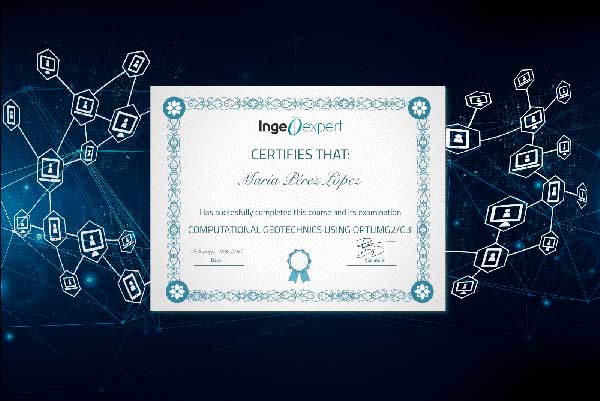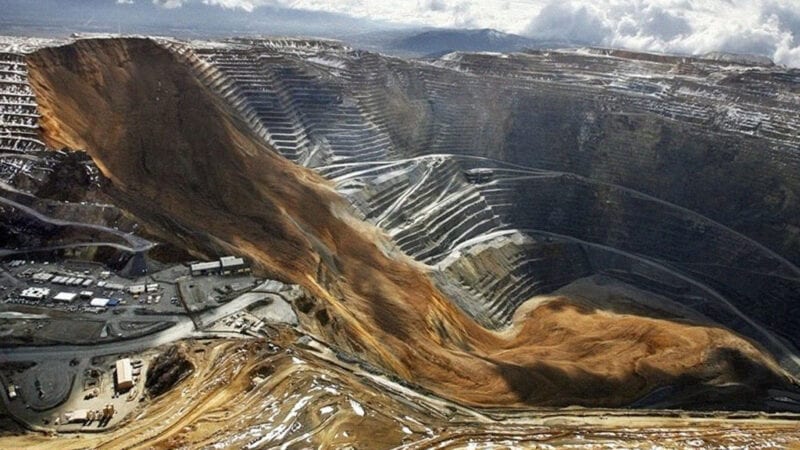Engineering for Geohazards course
50 hours / 6 weeks |
|
Online course |
|
|
Dates: 17th of June to 29th of July |
| Standard | Unemployed Or Student |
| $292 | $216 |
Introduction
The field of geohazard engineering is fast growing. Population growth and the desire to live in scenic regions has led to increased construction in areas that were once deemed hazardous. The result has been an increase in incidences of landslides, rockfall, debris flows, and avalanche events with a consequent toll on human life and property.
This course provides an overview of the state of the art in geohazards engineering. It examines current state-of-the-practice including field methods, design methodologies, mitigation strategies, and construction methods. The course will focus basically on the American market and codes but will incorporate both European and other international experience.
Objectives
- Provide attendees with the basic knowledge to understand geohazard engineering
- Provide knowledge of field methods and engineering design for geohazard structures
- Provide an understanding of the use of analyses, modeling, and design tools
- Provide an overview of materials and products used throughout the world for geohazard mitigation
Limited places.
Module 1: Introduction to Geohazards (2 hours lecture)
- Course Introduction
- Course Goals
- Instructor Introduction
- History Development of the Modern Discipline
- Main Branches
- Resources Available
Module 2: Rockfall (8 hours lecture)
- Rockfall Mechanics and Protection Overview
- Rockfall Analyses
- Rockfall Mitigation Solutions and Applications
- Rockfall Protection Systems
- Rockfall Mitigation Case Study
- System Design & Specifications
Module 3: Shallow Slope Failures and Stabilization (5 hours lecture)
- Principles of Mesh Systems
- Analyses
- Case Studies
- Shallow Landslide Barriers
Module 4: Debris Flow (10 hours lecture)
- Introduction to Debris Flow
- Field Investigation for Debris Flow Barriers
- Debris Flow Barrier Testing & Design
- Design using Modeling Tools
- Debris Flow Barrier Case Studies
- Types of Debris Flow Barriers
Module 5: Avalanche (6 hours lecture)
- Introduction
- Planning
- Snow Pressure
- Design
- Types of Protective Structures
Module 6: Construction (8 hours lecture)
- Anchors
- Foundations
- Testing
- Methods and Case Studies
Approximately 39 hours lecture and 11 hours of reading/project assignments
Dr. William F. Kane
Dr. William F. Kane received his B.A. in geology from James Madison University, and his M.S. and Ph.D. degrees in Civil Engineering from Virginia Tech. He is President of KANE GeoTech, Inc., Stockton, California, which he founded in 1997. KANE GeoTech is considered one of the leading engineering firms in the field of geohazards. It consults on a variety of geotechnical problems for public agencies and private industry, especially in the areas of geohazards and, slope stability, and geotechnical instrumentation.
An award-winning professor, Dr. Kane has taught civil engineering and engineering geology at the universities of Tennessee, Pacific, and Alabama-Huntsville. He has authored or co-authored dozens of technical papers and reports.
Professionally, Dr. Kane is a registered professional civil engineer in 30 states and a registered professional geologist in Tennessee. He conducts geohazard engineering workshops in the U.S. and internationally. and has appeared as a geotechnical expert both in litigation and on national media outlets including CNBC and CBS radio and television.
The course is delivered online through our easy-to-use Virtual Campus platform. For this course, a variety of content is provided including:
– eLearning materials
– Videos
– Interactive multimedia content
– Live webinar classes
– Texts and technical articles
– Case studies
– Assignments and evaluation exercises
Students can download the materials and work through the course at their own pace.
We regularly update this course to ensure the latest news and state-of-the-art developments are covered, and your knowledge of the subject is current.
Live webinars form part of our course delivery. These allow students and tutors to go through the course materials, exchange ideas and knowledge, and solve problems together in a virtual classroom setting. Students can also make use of the platform’s forum, a meeting point to interact with tutors and other students.
The tutoring system is managed by email. Students can email the tutor with any questions about the course and the tutor will be happy to help.
This course is of interest to all geotechnical and civil engineers and geologists and engineering geologists and students who wish to obtain a basic understanding of design for geohazard mitigation and protection. It is also suitable for government and other decision makers who specify and implement protection measures. A basic understanding of geology and engineering principles is recommended but not required.
Once a student finishes the course and successfully completes the assignments and evaluation tests, they are sent an accreditation certificate. The certificate is issued by Ingeoexpert to verify that the student has passed the course. It is a digital certificate that is unique and tamper-proof – it is protected by Blockchain technology. This means it is possible for anyone to check that it is an authentic, original document.
You will be able to download the certificate in an electronic format from the Virtual Campus platform. The certificate can be forwarded by email, shared on social networks, and embedded on websites. To see an example, click here.
Attendees of this course will be able to enhance their job prospects by expanding their ability to design mitigation and structures. The geohazards field is relatively small at the present time in terms of practitioners and this course will help give attendees a boost in career opportunities.
Introduction
The field of geohazard engineering is fast growing. Population growth and the desire to live in scenic regions has led to increased construction in areas that were once deemed hazardous. The result has been an increase in incidences of landslides, rockfall, debris flows, and avalanche events with a consequent toll on human life and property.
This course provides an overview of the state of the art in geohazards engineering. It examines current state-of-the-practice including field methods, design methodologies, mitigation strategies, and construction methods. The course will focus basically on the American market and codes but will incorporate both European and other international experience.
Objectives
- Provide attendees with the basic knowledge to understand geohazard engineering
- Provide knowledge of field methods and engineering design for geohazard structures
- Provide an understanding of the use of analyses, modeling, and design tools
- Provide an overview of materials and products used throughout the world for geohazard mitigation
Limited places.
Module 1: Introduction to Geohazards (2 hours lecture)
- Course Introduction
- Course Goals
- Instructor Introduction
- History Development of the Modern Discipline
- Main Branches
- Resources Available
Module 2: Rockfall (8 hours lecture)
- Rockfall Mechanics and Protection Overview
- Rockfall Analyses
- Rockfall Mitigation Solutions and Applications
- Rockfall Protection Systems
- Rockfall Mitigation Case Study
- System Design & Specifications
Module 3: Shallow Slope Failures and Stabilization (5 hours lecture)
- Principles of Mesh Systems
- Analyses
- Case Studies
- Shallow Landslide Barriers
Module 4: Debris Flow (10 hours lecture)
- Introduction to Debris Flow
- Field Investigation for Debris Flow Barriers
- Debris Flow Barrier Testing & Design
- Design using Modeling Tools
- Debris Flow Barrier Case Studies
- Types of Debris Flow Barriers
Module 5: Avalanche (6 hours lecture)
- Introduction
- Planning
- Snow Pressure
- Design
- Types of Protective Structures
Module 6: Construction (8 hours lecture)
- Anchors
- Foundations
- Testing
- Methods and Case Studies
Approximately 39 hours lecture and 11 hours of reading/project assignments
Dr. William F. Kane
Dr. William F. Kane received his B.A. in geology from James Madison University, and his M.S. and Ph.D. degrees in Civil Engineering from Virginia Tech. He is President of KANE GeoTech, Inc., Stockton, California, which he founded in 1997. KANE GeoTech is considered one of the leading engineering firms in the field of geohazards. It consults on a variety of geotechnical problems for public agencies and private industry, especially in the areas of geohazards and, slope stability, and geotechnical instrumentation.
An award-winning professor, Dr. Kane has taught civil engineering and engineering geology at the universities of Tennessee, Pacific, and Alabama-Huntsville. He has authored or co-authored dozens of technical papers and reports.
Professionally, Dr. Kane is a registered professional civil engineer in 30 states and a registered professional geologist in Tennessee. He conducts geohazard engineering workshops in the U.S. and internationally. and has appeared as a geotechnical expert both in litigation and on national media outlets including CNBC and CBS radio and television.
The course is delivered online through our easy-to-use Virtual Campus platform. For this course, a variety of content is provided including:
– eLearning materials
– Videos
– Interactive multimedia content
– Live webinar classes
– Texts and technical articles
– Case studies
– Assignments and evaluation exercises
Students can download the materials and work through the course at their own pace.
We regularly update this course to ensure the latest news and state-of-the-art developments are covered, and your knowledge of the subject is current.
Live webinars form part of our course delivery. These allow students and tutors to go through the course materials, exchange ideas and knowledge, and solve problems together in a virtual classroom setting. Students can also make use of the platform’s forum, a meeting point to interact with tutors and other students.
The tutoring system is managed by email. Students can email the tutor with any questions about the course and the tutor will be happy to help.
This course is of interest to all geotechnical and civil engineers and geologists and engineering geologists and students who wish to obtain a basic understanding of design for geohazard mitigation and protection. It is also suitable for government and other decision makers who specify and implement protection measures. A basic understanding of geology and engineering principles is recommended but not required.
Once a student finishes the course and successfully completes the assignments and evaluation tests, they are sent an accreditation certificate. The certificate is issued by Ingeoexpert to verify that the student has passed the course. It is a digital certificate that is unique and tamper-proof – it is protected by Blockchain technology. This means it is possible for anyone to check that it is an authentic, original document.
You will be able to download the certificate in an electronic format from the Virtual Campus platform. The certificate can be forwarded by email, shared on social networks, and embedded on websites. To see an example, click here.
Attendees of this course will be able to enhance their job prospects by expanding their ability to design mitigation and structures. The geohazards field is relatively small at the present time in terms of practitioners and this course will help give attendees a boost in career opportunities.
8 reviews for Engineering for Geohazards course
More info
Finish this course and get a certificate based on Blockchain
Engineering for Geohazards course

Blockchain technology makes the certificate incorruptible, enabling companies to verifiy its autenticity.
Engineering for Geohazards course
| $292 | $216 | |
| Get more information |





Ahmet Sefa Ozer –
Dr. Kane is great lecturer and master of geological natural hazards. The course provides extensive knowledge about most of geological natural hazards measures. Highly recomended for the people who is interested in mitigation and/or remedial measures for geological natural hazards.
Mauro Bernabei –
I would like the to thank William for all the lectures, the webinars and the excellent predisposition to teach and share his knowledge.
Ahsan Saif –
Outstanding course work and easy explanations. Mr Kane is no doubt a master of his craft.
Stuart Crossfield –
Great Course and well worth it! Thanks
Richard Badiola –
Every topic is well-organized and relevant for practicing Civil Engineers, contractors, and engineering professionals. It makes me ready and equip to move onwards in my Geotechnical engineering career, especially in the aspect of Geohazard mitigation design. I’m grateful much to Dr Kane for his love and passion for teaching and sharing his expertise!
Anush Ghazaryan –
I am very pleased with the way professor William Kane teaches. By his teaching methodology, difficult concepts turn out much simpler. It’s a great way to improve knowledge. Thanks a lot.
Lewis Lovell –
A great course to learn about the engineering techniques used to protect our infrastructure from geohazards: the lecturer is well-experienced in the field and provides great insight into the common mistakes of newer engineers. I am impressed with the course quality, and I believe it is worth the investment.
Mutombo Ilunga –
Ilove the coureses and i will recommend to friends for their carrer developement